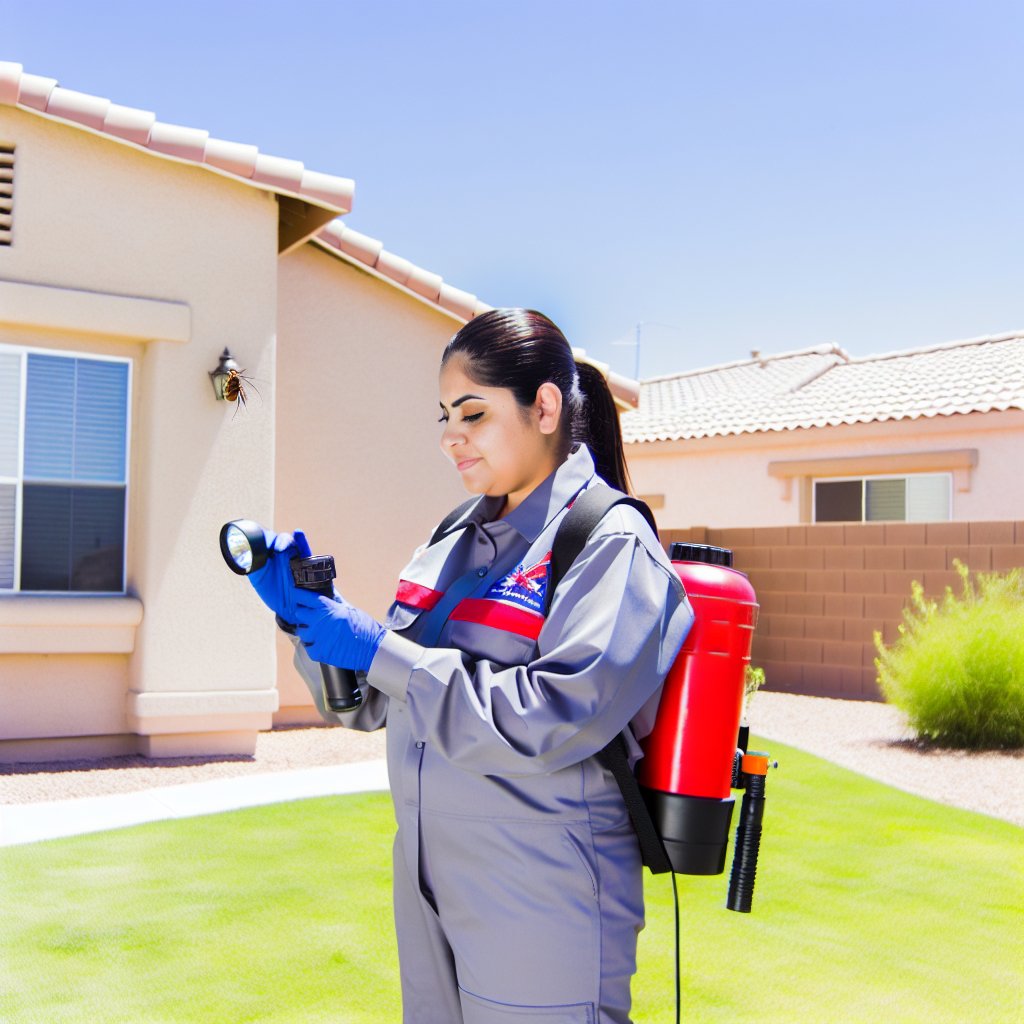Introduction:
Pest control plays a crucial role in maintaining public health.
It prevents the spread of diseases carried by pests.
Common pests such as mosquitoes, rats, and cockroaches can negatively impact public health and the environment.
Impact of Pests on Public Health:
Pests like mosquitoes are vectors for diseases such as malaria and dengue fever.
Rats can spread leptospirosis.
Cockroaches can trigger asthma and allergies.
In addition to causing health issues, pests can also contaminate food sources.
They damage property, leading to financial burdens for individuals and communities.
Types of Pests Threatening Public Health:
Different pests pose unique threats to public health.
For example, ticks can transmit Lyme disease.
Flies can spread bacterial infections like E. coli and salmonella.
It is essential to implement effective pest control measures.
These measures protect public health and mitigate the risks associated with pest infestations.
Health Risks Associated with Pests
Rodents, cockroaches, and mosquitoes are notorious for carrying diseases.
These pests can transmit illnesses such as malaria, dengue fever, and Lyme disease.
Diseases like malaria and dengue fever are transmitted through mosquito bites.
When mosquitoes feed on infected hosts, they become carriers of the disease.
Similarly, rodents like rats can spread diseases through their droppings and urine.
Cockroaches can carry pathogens on their bodies and contaminate food and surfaces.
When humans come into contact with these pests or their excreta, they risk infection.
Transform Your Career Today
Unlock a personalized career strategy that drives real results. Get tailored advice and a roadmap designed just for you.
Start NowStatistics show that millions of people globally are affected by pest-borne illnesses.
In countries with poor sanitation, pests are a significant public health concern.
For instance, in sub-Saharan Africa, malaria is a leading cause of morbidity and mortality.
According to WHO, there were an estimated 200 million cases of malaria in 2019.
Out of these cases, nearly 400,000 people died, mostly children under the age of five.
Similarly, dengue fever is a growing problem in tropical and subtropical regions.
In 2016, there were 3.34 million reported cases of dengue fever globally.
The prevalence of these diseases underscores the importance of pest control measures.
Prevention and Control Methods
When it comes to preventing and controlling pests, there are various methods that can be employed to ensure public health remains uncompromised.
These methods include:
- Sanitation: Keeping the environment clean and free of food sources for pests is crucial in preventing infestations.
- Trapping: The use of traps can help capture and remove pests, preventing them from multiplying and spreading diseases.
- Chemical Treatments: In cases where infestations are severe, the use of pesticides may be necessary to eradicate pests effectively.
Importance of Integrated Pest Management (IPM) Strategies
Integrated Pest Management (IPM) is a holistic approach that emphasizes the use of multiple strategies to control pests.
By incorporating various methods of pest control, IPM can reduce the reliance on pesticides, which can have harmful effects on public health and the environment.
This approach focuses on prevention, monitoring, and control to effectively manage pest populations while minimizing risks to human health and the ecosystem.
Role of Professional Pest Control Services
Professional pest control services play a crucial role in managing pest infestations and protecting public health.
These professionals are trained to identify the type of pests present, assess the extent of the infestation, and implement the most appropriate control measures.
By engaging the services of pest control experts, communities can effectively address pest problems while ensuring the safety of residents and the environment.
Delve into the Subject: Tips for New Fitness Center Employees
Economic Impact of Pest Control
Investing in pest control measures for public health has numerous economic benefits.
Pest infestations can lead to extensive property damage, food contamination, and increased healthcare costs.
Property Damage
- Pests like termites, rodents, and carpenter ants can cause significant damage to structures.
- Repairing this damage can be costly and may require extensive renovations.
- Investing in regular pest control can prevent these destructive pests from causing harm to your property.
Food Contamination
- Pests such as cockroaches, rats, and flies can contaminate food items in homes, restaurants, and grocery stores.
- Consuming contaminated food can lead to foodborne illnesses and result in increased healthcare expenses.
- Proactive pest control measures can help prevent food contamination and ensure food safety.
Increased Healthcare Costs
- Exposure to pests and their droppings can trigger allergies and respiratory problems in individuals.
- Seeking medical treatment for pest-related health issues can be expensive.
- By implementing pest control practices, you can reduce the risk of health problems and avoid unnecessary healthcare costs.
Proactive Pest Control for Long-Term Savings
Proactively addressing pest issues can actually save you money in the long run.
Transform Your Career Today
Unlock a personalized career strategy that drives real results. Get tailored advice and a roadmap designed just for you.
Start NowHere are some examples of how proactive pest control measures can help save money:
Pest Prevention
- Regular pest inspections can help identify and address pest problems before they escalate.
- Preventing a pest infestation is more cost-effective than dealing with a full-blown infestation.
- Investing in preventative pest control measures can save you money on costly repairs and healthcare expenses.
Property Maintenance
- Pests can cause damage to your property’s structure, insulation, and electrical wiring.
- Repairing this damage can be time-consuming and expensive.
- By implementing pest control measures, you can preserve the integrity of your property and avoid costly repairs.
Protecting Investments
- Real estate properties, businesses, and agricultural facilities are valuable investments.
- Pest infestations can decrease the value of these assets and disrupt business operations.
- Regular pest control services can safeguard your investments and prevent financial losses in the future.
Investing in pest control for public health not only protects individuals from health risks but also helps save money by preventing property damage, food contamination, and healthcare expenses.
By prioritizing proactive pest control measures, communities can ensure a healthier and more economically sustainable environment for all.
Find Out More: Building a Strong Online Presence as a Financial Advisor
Environmental Considerations
When it comes to pest control methods, it is crucial to consider the environmental implications of these practices.
The use of pesticides, in particular, raises concerns about the impact on the environment.
- Some pesticides can leach into the soil and contaminate water sources, affecting ecosystems and wildlife.
- Airborne pesticides can drift and harm non-target organisms, including beneficial insects and pollinators.
- Residues from pesticides can accumulate in the environment, leading to long-term effects on plants, animals, and humans.
- Choosing eco-friendly pest control options is essential in minimizing the harm to the environment. These methods focus on natural and non-toxic solutions to manage pest populations.
- Examples of eco-friendly pest control include using biological controls, such as introducing predators or parasites to target pests, and employing physical barriers to prevent infestations.
- Integrated Pest Management (IPM) is another eco-friendly approach that combines multiple strategies to manage pests effectively while minimizing impact on the environment.
- By promoting the use of eco-friendly pest control options, we can reduce the reliance on harmful chemicals and protect the environment from potential damage.
The connection between environmental health and public health is significant in pest management practices.
A healthy environment is essential for maintaining public health and well-being.
- Environmental factors, such as air and water quality, play a crucial role in determining the prevalence of pests and disease vectors in a community.
- Poor environmental conditions can create breeding grounds for pests, increasing the risk of disease transmission and contamination of food sources.
- Implementing sustainable pest control practices not only protects the environment but also enhances public health by reducing the spread of diseases carried by pests.
- By considering the environmental implications of pest control methods and selecting eco-friendly options, we can safeguard the health of both the ecosystem and the community.
You Might Also Like: Financial Advisors: Navigating Career Transitions

Community Engagement and Education
Importance of Community Involvement in Pest Control Efforts
- Collaborating with neighbors to address pest issues can lead to more effective solutions.
- Sharing information and resources can help in preventing pest infestations on a larger scale.
- Building a strong community network can ensure timely and coordinated pest control measures.
Ways to Educate the Public about the Role of Pests in Public Health
- Organize workshops or seminars to raise awareness about the diseases carried by pests.
- Use social media platforms to share educational content on pest control and prevention.
- Distribute flyers or brochures highlighting the importance of maintaining a pest-free environment.
Benefits of Pest Control
- Reduced risk of disease transmission from pests such as mosquitoes and rodents.
- Preservation of property and infrastructure from damage caused by pests.
- Improved quality of life by creating a healthier and safer living environment.
Encouraging Proactive Measures to Prevent Pest Infestations
- Seal cracks and crevices in buildings to prevent entry points for pests.
- Properly store food in airtight containers to avoid attracting pests like ants and cockroaches.
- Regularly maintain hygiene practices to eliminate pest-friendly conditions in homes and public spaces.
Community engagement and education play a crucial role in pest control efforts.
By involving the public and spreading awareness about the risks associated with pests, we can collectively work towards creating a pest-free environment for everyone.
It is essential for individuals to take proactive measures to prevent pest infestations and safeguard public health in their homes and communities.
Let’s join hands to combat pests and promote a healthier and safer living environment for all.
Explore Further: Developing a Strong Restaurant Management Team
Government Policies and Regulations
Government agencies play a crucial role in ensuring that pest control practices adhere to established standards and regulations.
Enforcing laws related to pest management is essential to safeguard public health and ensure the effectiveness of pest control measures.
Transform Your Career Today
Unlock a personalized career strategy that drives real results. Get tailored advice and a roadmap designed just for you.
Start NowOne successful example of a public health initiative that incorporates pest control is the Integrated Pest Management (IPM) approach.
IPM focuses on using a combination of strategies, such as biological control, habitat modification, and targeted pesticide use, to manage pests effectively while minimizing risks to human health and the environment.
Regulatory agencies, such as the Environmental Protection Agency (EPA) in the United States, set guidelines for the registration and use of pesticides to protect public health.
These agencies evaluate the potential risks associated with pesticide use and establish maximum residue limits to prevent harmful exposures.
Local health departments also play a significant role in enforcing regulations related to pest control, such as mosquito abatement programs to prevent the spread of vector-borne diseases.
By enforcing laws and regulations related to pest control, government agencies can promote a healthier environment and reduce the risks associated with pest-borne illnesses.
Pest Control and Public Health
Pest control plays a crucial role in safeguarding public health.
Effective pest management is essential to prevent the spread of diseases carried by pests.
Collaboration between government agencies, pest control professionals, and the community is vital.
It is important to prioritize pest control as a fundamental component of maintaining public health and safety.
By working together, we can create a healthier environment for all members of society.
Let us all make a concerted effort to address pest issues promptly and efficiently.
Together, we can minimize health risks and enhance the well-being of our communities.
Remember, pest control is not just about eliminating nuisances; it is about protecting public health.
So, let us all commit to prioritizing pest control measures for the greater good of our society.
Together, we can create a healthier and safer environment for everyone to thrive in.
Additional Resources
Public Health Importance of Urban Rodents – Pest Control Technology
WHY IS PEST CONTROL CONSIDERED AN ESSENTIAL SERVICE …
[E-Books for Sale]
The Big Book of 500 High-Paying Jobs in America: Unlock Your Earning Potential
$19.99 • 500 High-Paying Jobs • 330 pages
Explore 500 high-paying jobs in America and learn how to boost your career, earn more, and achieve success!
See All 500 High-Paying Jobs of this E-Book
1001 Professions Without a Degree: High-Paying American Jobs You Can Start Now
$19.99 • 1001 Professions Without a Degree • 174 pages
Discover 1001 high-paying jobs without a degree! Unlock career tips, skills, and success strategies for just $19.99!




